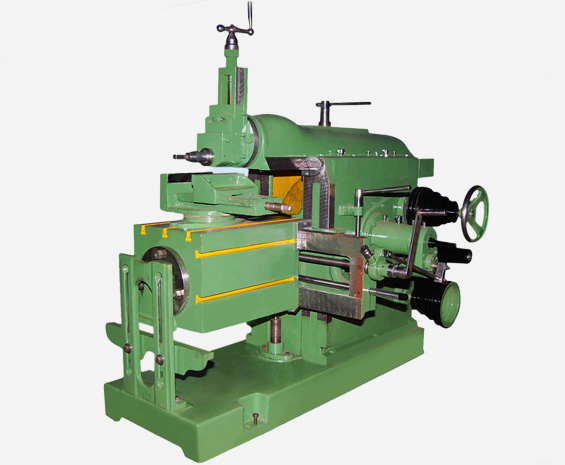Shaper Machines
Shaper Machines
SHAPER MACHINE
BEST & HIGH QUALITY SHAPER MACHINES MANUFACTURER IN INDIA WITH DURABILITY
Zurken Shaper Machines very much demandable in Metal Industries since 2000 due to its Material quality & durability also available in very affordable price.The concept of Shaping machine is a machine tool for shaping metal or wood, the work piece turns about a horizontal axis against a fixed tool. It can cut curves, angles and many other shapes according to demand and requirement. It is a popular machine in India because its movement is very simple although it can produce a variety of work. It uses the linear relative motion. It can form flat surfaces and cutting tool moves with a reciprocating motion. The shaper machine is a machine tool used primarily for: Producing a flat or plane surface which may be in a horizontal, a vertical or an angular plane. Making slots, grooves and keyways. Producing contour of concave/convex or a combination of these.
A shaper is a type of machine tool that uses linear relative motion between the workpiece and a single-point cutting tool to machine a linear tool path. Its cut is analogous to that of a lathe, except that it is (archetypal) linear instead of helical. (Adding axes of motion can yield helical tool paths, as also done in helical planing.) A shaper is analogous to a planer, but smaller, and with the cutter riding a ram that moves above a stationary workpiece, rather than the entire workpiece moving beneath the cutter. The ram is moved back and forth typically by a crank inside the column; hydraulically actuated shapers also exist.
PARTS OF HIGH QUALITY SHAPER MACHINE
The main parts of shaping machine are as under:
• Ram
• Table
• Clapper box
• Tool head
• Column
• Cross Rail
• Stroke Adjustment
• Table Supports
• Base
The ram is the major component of the Zurken shaper machines in India . It has the tool post attached with cutting tool, and a worktable which is used for holding the part and also capable for motion. Ram moves in the forward and backward directions. The shaper machine manufactures make machines enough capable which has power to cut and shape metal or other strong materials.
Types of Zurken Shaper Machines
Shapers are mainly classified as standard, draw-cut, horizontal, universal, vertical, geared, crank, hydraulic, contour and traveling head.The horizontal arrangement is the most common. Vertical shapers are generally fitted with a rotary table to enable curved surfaces to be machined (same idea as in helical planing). The vertical shaper is essentially the same thing as a slotter (slotting machine), although technically a distinction can be made if one defines a true vertical shaper as a machine whose slide can be moved from the vertical. A slotter is fixed in the vertical plane.Small shapers have been successfully made to operate by hand power. As size increases, the mass of the machine and its power requirements increase, and it becomes necessary to use a motor or other supply of mechanical power. This motor drives a mechanical arrangement (using a pinion gear, bull gear, and crank, or a chain over sprockets) or a hydraulic motor that supplies the necessary movement via hydraulic cylinders.
Zurken Shaper Operation
The workpiece mounts on a rigid, box-shaped table in front of the machine. The height of the table can be adjusted to suit this workpiece, and the table can traverse sideways underneath the reciprocating tool, which is mounted on the ram. Table motion may be controlled manually, but is usually advanced by an automatic feed mechanism acting on the feedscrew. The ram slides back and forth above the work. At the front end of the ram is a vertical tool slide that may be adjusted to either side of the vertical plane along the stroke axis. This tool-slide holds the clapper box and toolpost, from which the tool can be positioned to cut a straight, flat surface on the top of the workpiece. The tool-slide permits feeding the tool downwards to deepen a cut. This adjustability, coupled with the use of specialized cutters and toolholders, enable the operator to cut internal and external gear tooth profiles, splines, dovetails, and keyways.
The ram is adjustable for stroke and, due to the geometry of the linkage, it moves faster on the return (non-cutting) stroke than on the forward, cutting stroke. This action is via a slotted link
Showing the single result
